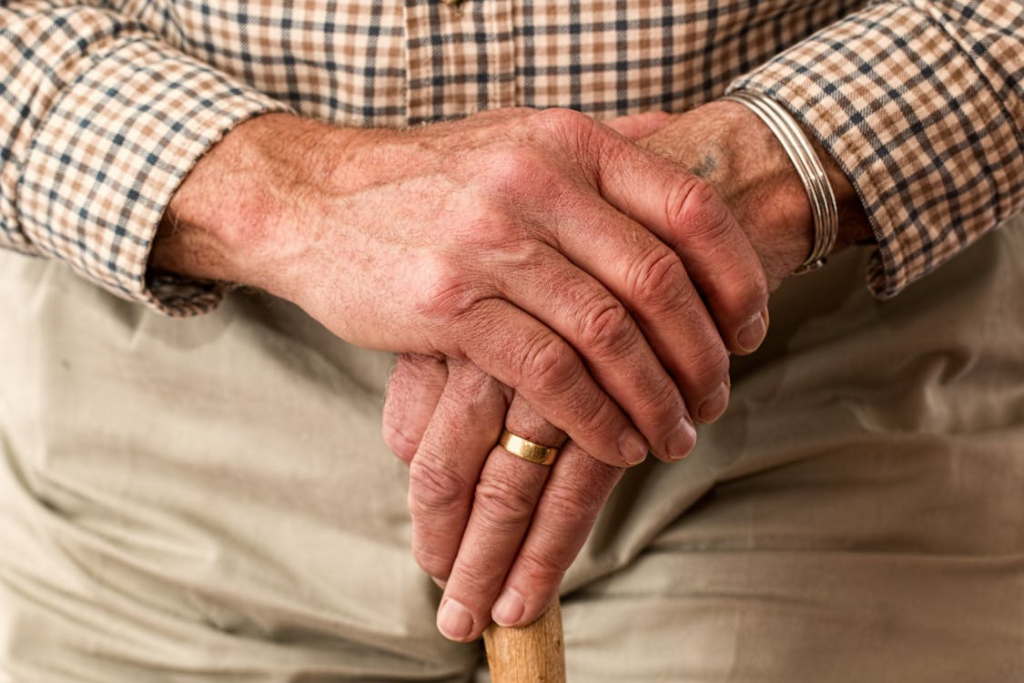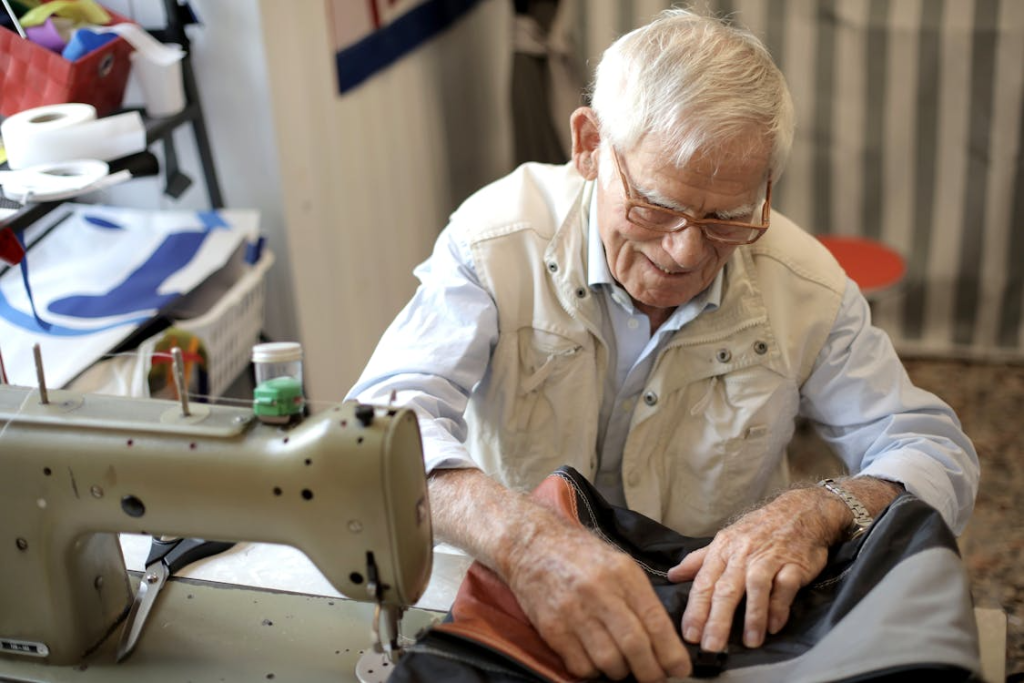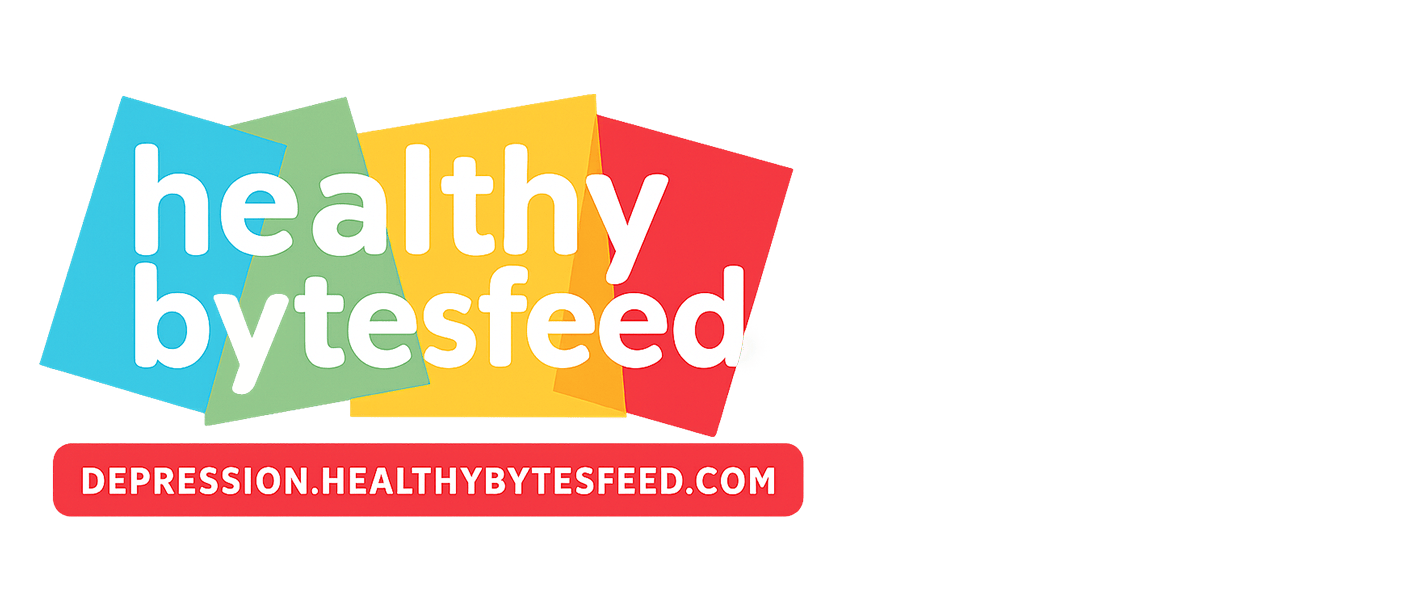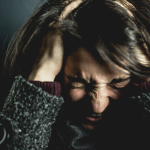- 1、The “Invisible Cloud” of Late Life: Hidden Manifestations of Anxiety in Older Adults
- 2、The Three-Dimensional Dilemma of Late-Life Anxiety: Intertwined Physiology, Cognition, and Behavior
- 3、Why Late-Life Anxiety Occurs: Physical Aging, Psychological Loss, and Inadequate Environmental Support
- 4、Real Case: From Closure to Openness—Martha’s Intervention Story (From ADAA Public Records)
- 5、Insights for Families, Caregivers, and Society: How to Dispel the Cloud of Late-Life Anxiety
- 6、Disclaimer
- 7、References
The “Invisible Cloud” of Late Life: Hidden Manifestations of Anxiety in Older Adults
Edward, a 72-year-old man in Seattle, USA, fell into a “nameless unease” after his wife passed away: every morning, the first thing he did was touch his chest to check his heartbeat, fearing it might “stop suddenly”; when he saw disease reports on TV, he would immediately compare the symptoms to his own and even secretly double his blood pressure medication dose; he signed up for the community’s senior tea party three times, but canceled each time at the last minute, claiming he “didn’t feel well”—as he put it, “I’m afraid no one will listen to me, and I’m even more afraid others will notice my shaky hands.”
Edward’s experience is far from unique. According to the 2023 Mental Health Report for Older Adults by the National Institute of Mental Health (NIMH), approximately 22% of adults aged 65 and above have significant anxiety symptoms, with “health worries,” “social isolation,” and “sense of loss of control over life” as the three core triggers. This rate rises to 38% among elderly people living alone[1]. The Anxiety and Depression Association of America (ADAA) adds that anxiety in older adults is often mistaken for a “normal part of aging,” and only 15% of anxious older adults actively seek professional help[2].
In China, the issue is equally prominent: the China National Blue Book on Mental Health of Older Adults (2023) notes that about 25% of urban and rural older adults experience varying degrees of anxiety, with rates reaching 41% among rural elderly living alone and 35% among those with chronic illnesses[3]. During my research at elderly care institutions, I observed that Chinese older adults often suppress anxiety out of “fear of burdening their children”—for example, they may worry about their declining memory but refuse to tell their children, fearing they will be sent to a nursing home; they may endure pain without mentioning it, afraid their children will spend money on medical treatment. A survey by Ding Xiang Doctor (a leading Chinese health platform) shows that 62% of anxious older adults hide their emotions by “pretending to be fine,” causing their anxiety to worsen over time[4].

Image Source: Pexels, Author: Pixabay
The Three-Dimensional Dilemma of Late-Life Anxiety: Intertwined Physiology, Cognition, and Behavior
NIMH’s research on mental health in older adults points out that unlike anxiety at other life stages, late-life anxiety is more likely to intersect with physical aging and chronic illnesses, forming a unique cycle of “physical discomfort → cognitive amplification → behavioral avoidance”[1]—a cycle that is particularly noticeable in home and social settings.
1.Physiological Reactions: Heightened “Body Alertness” from Aging and Illness
Physiologically, anxiety in older adults is often accompanied by physical decline and chronic illnesses. NIMH explains that as people age, the activity of the amygdala (the brain region associated with fear response) gradually increases (23% higher than in middle-aged adults), while the regulatory capacity of the prefrontal cortex decreases, making older adults more sensitive to “abnormal physical signals”[1]. For instance, Edward suspected he had Parkinson’s disease because of “occasional hand tremors” (doctors diagnosed it as mild age-related nerve degeneration), leading to insomnia; older adults with high blood pressure may fall into “fear of stroke” even over a slight blood pressure fluctuation (within the normal range).
Chinese older adults also face the dilemma of “anxiety compounded by chronic illnesses”: Ding Xiang Doctor notes that the rate of anxiety among older adults with chronic diseases such as diabetes and arthritis is 2.7 times higher than that of healthy older adults—pain and medication pressure from illnesses keep them in constant worry about “losing control of their bodies”[4]. A survey by a community health service center shows that 83% of anxious older adults experience physical symptoms such as “palpitations, chest tightness, and loss of appetite,” which are often misjudged as “worsening of the disease,” further intensifying anxiety[3].
2.Cognitive Biases: “Catastrophic Thinking” and “Self-Denial”
Cognitively, anxiety in older adults is often accompanied by two typical biases: catastrophic associations with “aging and death,” and denial of “self-worth.” ADAA’s clinical observations show that anxious older adults may interpret “forgetting where they put their keys” as a sign of “developing Alzheimer’s disease,” or “children not calling on weekends” as “children being unfilial and abandoning them”[2]. Edward even secretly wrote a “will” after “forgetting to take his medication twice in a week,” believing he was “dying soon.”
Cognitive biases in Chinese older adults are also linked to “changes in family roles”: the China National Blue Book on Mental Health of Older Adults mentions that 68% of rural older adults feel “useless” because they “can no longer do farm work or earn money for their children,” and this self-denial exacerbates anxiety. One older adult said, “I used to cook for the family, but now my hands shake too much to hold a wok spatula—I’m just a burden to my kids”[3]. Ding Xiang Doctor adds that this “sense of uselessness” is harder to detect than health worries but gradually makes older adults lose interest in life[4].
3.Behavioral Avoidance: Self-Isolation from “Avoiding Social Interactions” to “Refusing Help”
Behaviorally, anxiety in older adults manifests as “gradual avoidance”: first avoiding social interactions (e.g., refusing to participate in community activities), then avoiding necessary daily assistance (e.g., refusing to let children accompany them to doctor’s appointments), and finally falling into self-isolation. NIMH reports that 45% of anxious older adults reduce their outings, and 28% deliberately avoid familiar neighbors, often citing reasons like “afraid others will see I’m in poor health” or “afraid of saying the wrong thing and being laughed at”[1]. After his wife’s death, Edward even refused his only sister’s invitation to live with her, saying, “I don’t want to trouble her, and I’m afraid my nighttime trips to the bathroom will disturb her.”
Avoidance among Chinese older adults is often disguised as “considering their children’s feelings”: for example, they may lie to their children, saying “I can walk on my own, no need for you to run errands,” even when they need help buying groceries; they may refuse to live with their children for fear of “disrupting their children’s lives,” even though they worry about falling at home[3]. A survey by Ding Xiang Doctor found that this “pretending to be independent” avoidance causes older adults to miss opportunities for timely intervention—one older adult fell at home and lay on the floor for three hours before daring to call for help, saying afterward, “It’s nothing, I just tripped accidentally”[4].
Why Late-Life Anxiety Occurs: Physical Aging, Psychological Loss, and Inadequate Environmental Support
Late-life anxiety in older adults arises from the combined effects of “irreversible physical aging + loss of psychological role + broken social support”—it is not “inevitable with old age,” but an emotional response to multiple pressures.
1.Physiological Foundation: The Double Blow of Aging and Illness
The most direct trigger is physical change: NIMH’s neuroscientific research shows that serotonin levels (a key neurotransmitter regulating mood) in adults over 65 are 15%-20% lower than in middle age, making them more prone to anxiety[1]; at the same time, the incidence of chronic diseases increases with age (older adults over 65 have an average of 2.3 chronic diseases), and pain and treatment pressure from illnesses keep them in a constant “stress state”[1]. For example, Edward’s anxiety began after he was diagnosed with high blood pressure following his wife’s death: “I used to be in perfect health, but now I have to take medicine every day—I feel like a ‘pill popper’.”
2.Psychological Roots: The Overlay of Role Loss and Loneliness
Psychologically, the core of late-life anxiety lies in “two losses”: the loss of “social role” (e.g., losing work identity after retirement) and the loss of “emotional connection” (e.g., the death of a spouse or friends). NIMH points out that without a new focus in life after retirement, older adults may feel confused due to “suddenly having nothing to do,” and this confusion can easily turn into anxiety[1]. Edward was an engineer before retirement, busy every day; after retirement, he had no idea what to do, and this confusion turned into “panic” after his wife’s death.
Psychological pressure on Chinese older adults also comes from “intergenerational alienation”: the China National Blue Book on Mental Health of Older Adults mentions that 72% of urban older adults live with their children but “share the same roof but not the same heart”—children are busy with work and spend less than one hour communicating with their parents every day, so older adults may feel lonely even with family around[3]; rural older adults face the problem of “empty nests” due to “children working in cities,” and one older adult said, “I live alone at home, fall asleep watching TV at night, and wake up to darkness—I don’t know what to think about”[3]. This loneliness allows anxiety to “seep into every corner of life.”
3.Environmental Factors: Broken Support Systems and Prejudice
Environmentally, the intensification of late-life anxiety is often related to “inadequate support” and “social prejudice.” An ADAA survey shows that about 40% of communities in the U.S. lack mental health services for older adults, and when older adults want to see a counselor, they either “can’t find one nearby” or “think it’s too expensive”[2]; the situation is even more severe in China: the China National Blue Book on Mental Health of Older Adults points out that only 12% of urban and rural communities have elderly mental health counselors, and this rate is less than 5% in rural areas[3]—many older adults don’t even know that “anxiety can be helped by doctors.”
Social prejudice against “late-life anxiety” also hinders intervention: NIMH mentions that many people believe “it’s normal for older adults to be grumpy and overworried,” and even dismiss anxiety symptoms (such as repeated reminders or checking doors and windows) as “senile confusion,” ignoring the emotional pain behind them[1]; similar situations exist in China, where children often say, “Mom, don’t overthink” or “Dad, you’re just too free,” making older adults feel “their feelings are not understood” and more reluctant to open up[4].
Real Case: From Closure to Openness—Martha’s Intervention Story (From ADAA Public Records)
Martha, a 76-year-old woman, is featured in ADAA’s 2023 Late-Life Anxiety Intervention Report[2]. Her anxiety began after her husband’s death: initially, she only worried about her heart (she had mild coronary heart disease), but later she became afraid to go out alone, even afraid to use the microwave (fearing “accidental fire from improper operation”); her children wanted to take her to live with them, but she refused, saying, “I can take care of myself, no need for you to bother.” It wasn’t until she had a fever of 39°C but refused to call her children (out of “fear of troubling them”) that her children found out and took her to the hospital—only then did they realize how severe her anxiety was.
At her children’s insistence, Martha joined a senior mental health support group at the community hospital. Following NIMH’s “cognitive-behavioral approach” for late-life anxiety[1], the counselor helped her with three key steps:
Clarifying physical signals: Martha was asked to record “worried physical symptoms” and “doctor’s diagnoses”—for example, “hand tremors” were linked to “mild age-related nerve degeneration, no major issue”—helping her distinguish between “real illness” and “anxiety-amplified symptoms”;
Rebuilding self-worth: Martha was encouraged to join a “senior handicraft class” at the community. She was good at knitting, and her works were selected for a community charity sale. When she received a card saying “Thank you, Grandma,” she said for the first time, “I didn’t know I could still help others”;
Practicing accepting support: Martha was asked to “trouble her children”—for example, letting her daughter accompany her grocery shopping and her son teach her to make video calls on a smartphone—gradually breaking the psychological barrier of “fear of burdening others.”
Note: This intervention plan was personalized for Martha. It is for educational purposes only and does not constitute medical or psychological advice. All anxiety interventions for older adults must be developed after assessment by a professional.
After six months of intervention, Martha not only dared to go out alone but also became the “leader” of the handicraft class. She smiled and said, “I used to think I was useless in old age, but now I know even a small knitted sweater can make someone happy”[2]. This case confirms NIMH’s view: late-life anxiety is not “inevitable with aging”—with scientific intervention and support, older adults can also enjoy a relaxed late life[1].

Image Source: Pexels, Author: Andrea Piacquadio
Insights for Families, Caregivers, and Society: How to Dispel the Cloud of Late-Life Anxiety
Alleviating late-life anxiety requires the joint efforts of “family understanding + professional caregiver support + improved social systems”—it cannot rely solely on older adults “cheering themselves up.”
1.For Families: Less “Persuasion,” More “Companionship and Listening”
Many children tend to say “Don’t overthink” or “There’s nothing to worry about” when facing their parents’ anxiety, but this only makes older adults more closed off. NIMH recommends that families first practice the “Three Don’ts and Three Dos”: Don’t deny (avoid saying “You’re just worrying for no reason”), Don’t blame (avoid saying “You’re just too free”), Don’t make decisions for them (avoid saying “You must live with me”); Do listen (ask “Are you worried about your health, or about burdening us?”), Do accompany (have a meal or take a walk together at least once a week), Do act as a “bridge” (help them connect with community services instead of doing everything for them)[1].
Ding Xiang Doctor adds that families can help older adults “find things to do”—for example, growing flowers together or learning to cook a simple dish—letting them feel “they are still useful”[4]; for rural older adults, children can “trouble them more”—for example, asking them to teach how to cook hometown dishes or mend clothes—helping them feel “they can still help their children”[3].
2.For Caregivers: Focus on Emotions Behind “Physical Symptoms”
Community doctors and nursing home caregivers are the “first line of defense” in detecting late-life anxiety. ADAA recommends that caregivers pay attention to “emotional signals behind physical symptoms”: for example, if an older adult repeatedly complains about “palpitations” but no heart problems are found in examinations, it may be a sign of anxiety; if an older adult refuses to eat, it may not be “loss of appetite” but “fear of burdening caregivers with more work”[2].
Caregivers can talk about emotions in a “relaxed way”: for example, while watching TV with an older adult, say “This older person seems to worry about their health just like you—what do you think they should do?” using third-party topics to draw out their feelings[2]; at the same time, respect older adults’ “need for independence”—for example, if an older adult wants to pour water by themselves, don’t take over immediately, but say “I’ll stand by you, take your time”—giving them a sense of security without making them feel “useless”[1].
3.For Society: Improve Support Systems and Eliminate Prejudice Against “Late-Life Anxiety”
Society needs to do two things: first, improve mental health services for older adults—for example, setting up “senior mental health corners” in communities with professional counselors, so older adults can “access help near home”[3]; second, eliminate prejudice against “late-life anxiety”—through public service advertisements and community lectures, let more people know that “anxiety in older adults is not ‘senile confusion’ but an emotional issue that needs understanding”[1].
In rural areas, the China National Blue Book on Mental Health of Older Adults recommends using “village doctors”—training them to recognize basic signs of late-life anxiety (such as “older adults suddenly refusing to go out or repeatedly complaining about physical discomfort”) and refer them to higher-level hospitals in a timely manner[3]; in urban areas, “senior mental health hotlines” can be launched to provide support for homebound older adults[4].
Disclaimer
1.Statement on Link Accuracy: The external source links cited in this article (see “References” below) were accessible and valid at the time of content creation. However, we do not guarantee the subsequent accuracy, completeness, timeliness, or availability of the linked content. The update, modification, and maintenance of linked content are the sole responsibility of the original copyright holders of the respective sources. The author of this article shall not be liable for any subsequent changes to the linked content.
2.Disclaimer on Medical Advice: The content of this article is solely for educational and informative purposes regarding late-life anxiety in older adults. It does not constitute any medical diagnosis, disease treatment recommendation, medication guidance, or health intervention advice. If you or your family members (especially older adults) experience emotional distress or suspected late-life anxiety symptoms, do not self-judge, adjust behaviors, or handle the situation based on this article. Instead, promptly consult a formal medical institution, a qualified psychiatrist, or a senior mental health counselor to obtain personalized medical or psychological support—avoiding delays in resolving health issues due to self-management.
3.Statement on Copyright Compliance: The text content from the official websites of NIMH and ADAA used in this article strictly adheres to their copyright policies (NIMH allows free commercial use of non-image content; ADAA public reports may be cited); content from Ding Xiang Doctor and the China National Blue Book on Mental Health of Older Adults is sourced from publicly available materials clearly marked “free for educational reprint.” No misleading modifications have been made, no image materials from any source have been used, and no medications, health products, or related products have been recommended to users through this article—complying with copyright requirements.
References
[1] National Institute of Mental Health (NIMH). (2023). Mental Health Report for Older Adults & Content on “Mental Disorders in Older Adults”. Retrieved from https://www.nimh.nih.gov/health/topics/older-adults-and-mental-health; https://www.nimh.nih.gov/health/topics/anxiety-disorders
[2] Anxiety and Depression Association of America (ADAA). (2023). Late-Life Anxiety Intervention Report & Content on “Anxiety in Older Adults”. Retrieved from https://adaa.org/understanding-anxiety/special-populations/older-adults
[3] Chinese Association of Gerontology and Geriatrics. (2023). China National Blue Book on Mental Health of Older Adults (2023). Retrieved from https://www.chinageron.org.cn/resource/bluebook/202308/t20230810_10000.html
[4] Ding Xiang Doctor. (2023). Don’t Mistake Elderly “Worrying” for “Normal”: Late-Life Anxiety Needs to Be Seen & 3 Practical Ways to Help Elderly Family Members Relieve Anxiety. Retrieved from https://dxy.com/article/606789; https://dxy.com/article/607890







Discuss